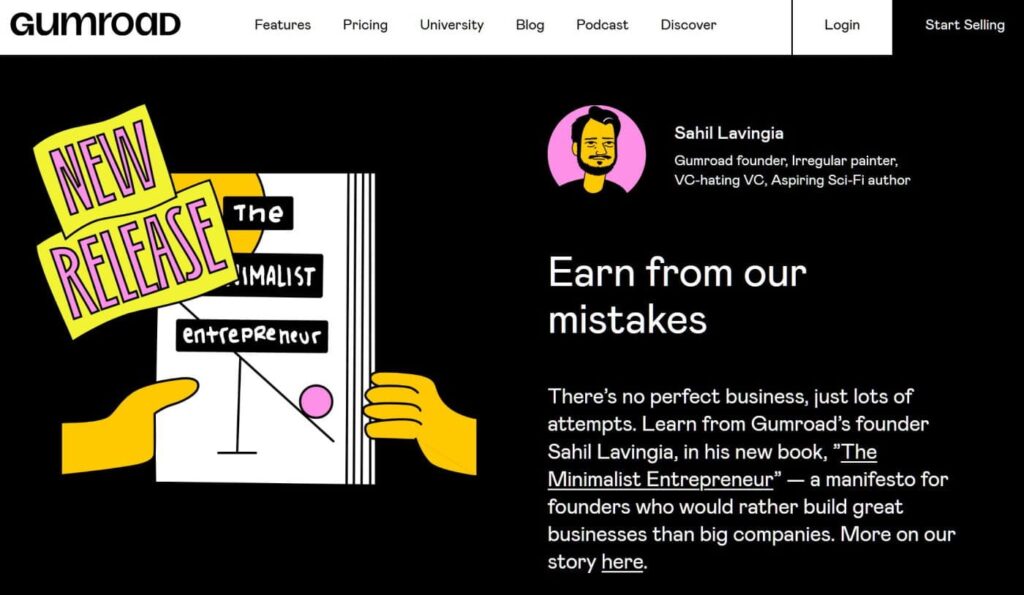People who hear a really strong story are immediately sold. Actually, nothing really changes from our childhood. Children always ask for one more story, one more book, one more movie. And they don’t even necessarily need variety: the same story works over and over again.
Adults are actually exactly the same. We too connect – whether we realize it or not – with stories. Marketing professionals involved in storytelling know this all too well.
Contents
Storytelling as a foundation for Saas Marketing
As a SaaS entrepreneur, you want people to commit to your service for a longer period of time. This makes storytelling especially useful for SaaS Marketing. After all, you are not selling a one-time product, but a subscription to a service. If you tell a story that people want to connect with, you make sure people want to connect with your product. How do you do that? With the 7 steps of the Storytelling Framework.
Every story is the same
It may seem like there are a lot of stories in the world. And somewhere, of course, there are. Only, in many cases, the guiding principle that stories follow is the same. The standard framework is a sum of story elements that people collectively feel make up “a good” story.
Intuitively a good story
That you find this framework in every blockbuster and every bestseller is therefore no accident and no preconceived plan. In fact, the framework is not prescriptive, but descriptive. It is not contrived: it is a dissection of all those leading stories that have gripped people from the beginning of history. You can use this knowledge to build a rock-solid story for your SaaS Marketing. You can then tell this story over and over again, in all sorts of variations and use it for different types of content such as:
-
- Landing pages
-
- Blog articles
-
- Social updates
-
- E-books / white papers
The Storytelling Framework: 7 components
A strong story always consists of the seven elements of the Storytelling Framework. If you use these seven elements to build the story under your SaaS Marketing, you will surely see this reflected in the number of customers you bring in and retain. We’ll explain using an example: Tim, a small business owner struggling with his website.
The hero
Every story has a hero. And if it’s good, you are the hero in your story. This is true for every person. As an entrepreneur, it is therefore important to realize that you should never try to be the hero in your customer’s story. There is room for only one hero in every story. Therefore, your customer is the hero of his own story. It is the only route to success: if your customer does not recognize himself as a hero in your company’s storytelling, he cannot sufficiently identify with the need to purchase your product. This means choosing a hero who resembles your ideal customer for storytelling in the context of your SaaS Marketing.
And what is your customer looking for? Your ideal customer is either looking to grow or prosper (make money, save time, gain status, save money) or to transform their identity (become something, become a better version of themselves).
Therefore, put yourself in your ideal client’s shoes. What do they crave? What keeps them from sleeping? With the answers to these types of questions, you can use their pain points in your story.
Tim is a small business owner. He has a small online store with which he competes valiantly with the big e-commerce giants. In doing so, Tim has earned an income that he can live on and provides products that make his customers happy.
The problem
Of course, the life of your hero / your customer does not run smoothly. Your customer has a problem. Otherwise, first, it would just be a boring story (have you ever watched a movie where nothing happens?) and second, there would be no role for your company to play. The problem consists of the challenge in the customer’s life for which your software provides the solution.
Tim, as a small merchant, does not have the budget to constantly hire a developer to build new features for his website. Tim does need a really good website that is completely up to date. Otherwise he will still lose out to large impersonal parties such as Microsoft and Amazon. What now?
The guide
Of course, your customer is a hero. However, your customer does not have all the necessary knowledge and skills to get out of trouble. Let’s face it: otherwise, he would have pulled himself out of the mud a long time ago. Fortunately, in your story there is also a role for a guide who will lead the hero to the solution of the problem. And that guide – you guessed it – is your SaaS company, using your product to make short work of the customer’s problem.
In doing so, show empathy (you know what they’re going through, you’ve been through it yourself) and demonstrate your authority.
As a SaaS entrepreneur, you know exactly what Tim is up against. You’ve worked as a developer for years and finally developed a sustainable and cost-effective solution for heroes like Tim: a page builder for web shops that is used by large and small companies like Tim’s.
Below you can see how Gumroad – a SaaS solution selling products online – shows empathy with “Earn from our mistakes”.

The Plan
The plan is the reason the hero needs a guide. Because, if the hero could have come up with a plan on his own, he would never welcome the guide with open arms. In the case of SaaS Marketing, using your software will always be the core of the plan and here you explain step by step what the hero can do with your software to achieve success.
By combining standard content blocks and whole-page templates with your page builder, small business owners like Tim can easily customize their own websites. Everything works intuitively: after all, you understand very well that your hero needs to focus on business.
Below you can see how Glide – a SaaS to easily create your own apps – explains the steps to get started with their solution:

The call to action
The call to action is the moment in the story when the hero is urged to take action: away from the problem and on to the solution. Often the call to action is simple: buy now! But you can also, for example, invite customers to join, evoking a completely different feeling.
Of course, Tim is heartened by the wise counsel of the guide. He follows the guide through a story about functionalities to a brightly colored button that says: start an online shop right away! Tim wants that, of course.
Avoiding failure
A story is not exciting if nothing is at stake. So this also applies to storytelling within SaaS Marketing. Research shows that people are more afraid of losing something than they are to bring in profit. So make sure your customer knows what they are missing out on if they don’t commit to your service.
If Tim does not switch to your page builder and continues to work with an outdated design, his customers will move on to web stores that do follow the latest trends and therefore have a better and more professional appearance. Because Tim depends on his customers for his income, he obviously wants to avoid that loss at all costs.
Success
In the end, of course, you want the hero to win. In many stories, that means more than just solving the problem: the prince not only wins from the villain but also gets the princess. Your hero not only gets the success your product promises, but also the life that comes with it. Make it visual, make it enticing. And make it clear that your product is the key to this all-encompassing success.
You’re telling your visitor here what your visitor will look like after the visitor gets started with your SaaS. Think of this as the before-and-after photos. Let them feel how transformative this process will be for them.
Tim not only has a beautiful website in no time: he also sees his customers increase and plays in one league with the big boys. Tim is a successful entrepreneur with an enviable online brand. What a success story!
You can use this Storytelling Framework in all your content: from landing pages, social updates, e-books to advertisements.
